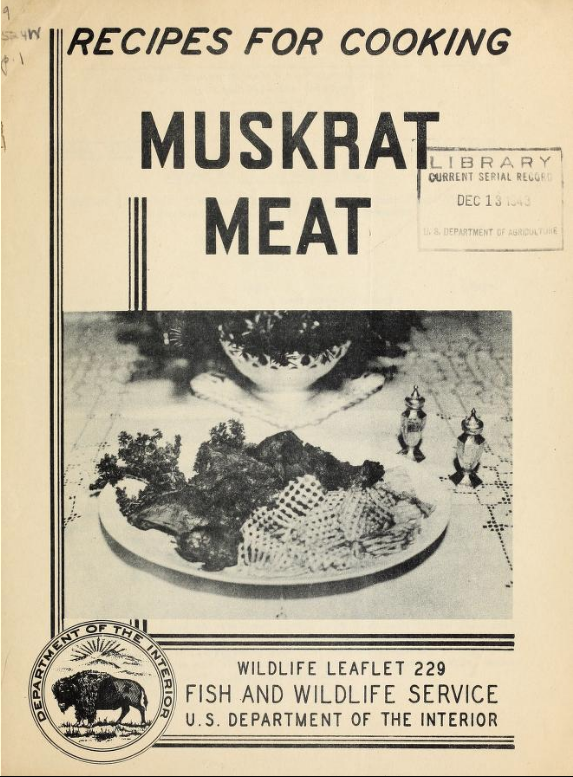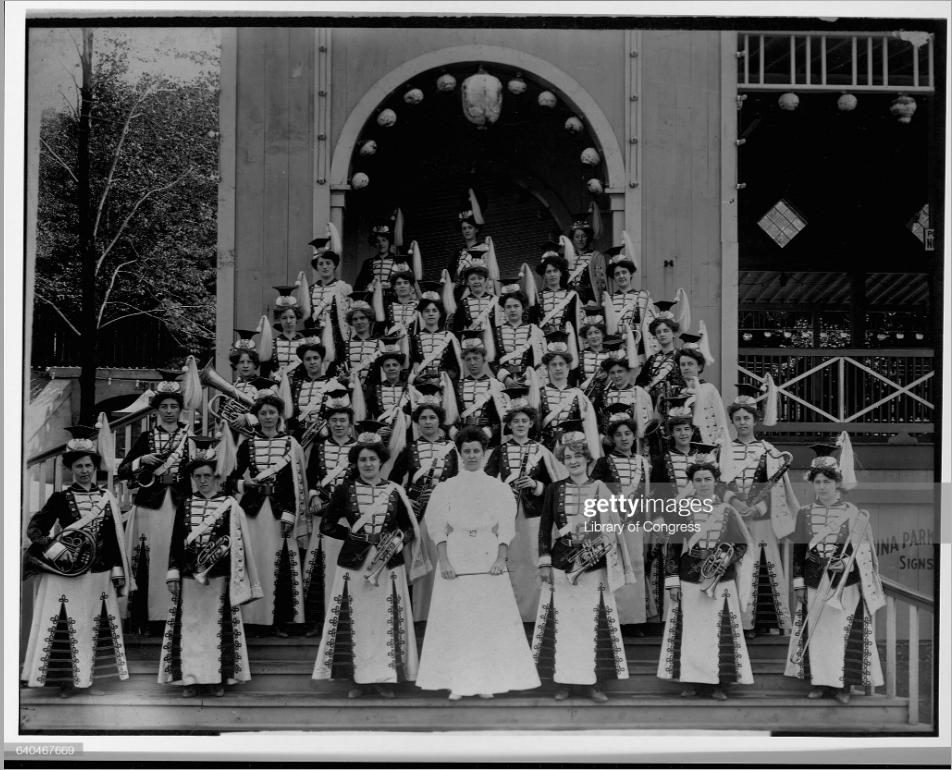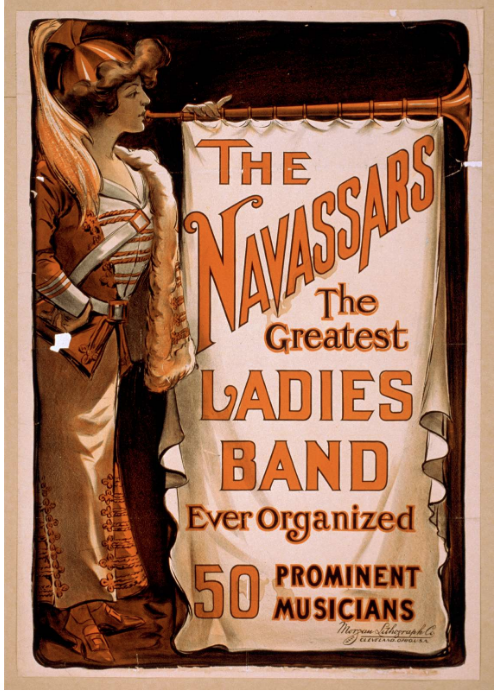December 2020
December 16, 2020
Toy Hitler
A popular toy in Nazi Germany was a miniature model of Hitler. It came in six action poses, including Hitler in an army jeep and in an open car doing the Nazi salute.Not many of these toy Hitlers survive, so if you have one, for some reason, it's probably worth some money. One of them was featured on Antiques Roadshow in 2012.

Newsweek - Dec 26, 1938

Posted By: Alex - Wed Dec 16, 2020 -
Comments (5)
Category: Dictators, Tyrants and Other Harsh Rulers, Toys, 1930s
Mary & Gretel
Motto: existence is short and capricious, leavened only by booze.
Posted By: Paul - Wed Dec 16, 2020 -
Comments (1)
Category: Animals, Games, Fantasy, Stop-motion Animation, 1910s, Alcohol
December 15, 2020
Cannibal Sandwiches
In what has apparently become an annual ritual, the Wisconsin Department of Health Services has warned Wisconsinites that 'cannibal sandwiches' (aka raw beef or tartare sandwiches) pose a health risk, and that it's really better to cook the meat first.Somehow I've gone my entire life without knowing that there was such a thing as cannibal sandwiches — let alone that they're considered a Christmas tradition in Wisconsin.
The traditional recipe for a cannibal sandwich is raw ground beef spread open-faced on rye bread. Salt and pepper the meat. Then add a few raw onions. Some people like a dash of Worcestershire on the meat. The sandwich should be served very cold. And it's common to have it with a beer.
Posted By: Alex - Tue Dec 15, 2020 -
Comments (9)
Category: Food, Christmas
Recipes for Cooking Muskrat Meat
Check it out here.
Posted By: Paul - Tue Dec 15, 2020 -
Comments (3)
Category: Animals, Food, Government, 1940s, Nausea, Revulsion and Disgust
December 14, 2020
Kent, the asbestos-filtered cigarette
In 1952, in response to growing concerns about the safety of cigarettes, the Lorillard Tobacco Company introduced Kent cigarettes, boasting that they contained a "Micronite filter" developed by "researchers in atomic energy plants".Turned out that the key ingredient in the Micronite filter was asbestos. From wikipedia:
According to Mother Jones, the company is still battling lawsuits to this day.

Chicago Tribune - Apr 1, 1952
Posted By: Alex - Mon Dec 14, 2020 -
Comments (1)
Category: Health, Atomic Power and Other Nuclear Matters, Smoking and Tobacco, 1950s
Grover Loening’s Flying Airstrip

Source.
The inventor's Wikipedia page.
Posted By: Paul - Mon Dec 14, 2020 -
Comments (1)
Category: Excess, Overkill, Hyperbole and Too Much Is Not Enough, War, Weapons, Air Travel and Airlines, 1950s
December 13, 2020
Clothes for Snowmen
Various sources report that when Madame de la Bresse died in 1876, she instructed in her will that all her money be used for buying clothes for snowmen. For instance, Bill Bryson shares this anecdote in his 1990 book The Mother Tongue: English & How it got that Way:Here's a 1955 cartoon about Madame de la Bresse and the snowmen:

The Montana Standard - May 6, 1955
But the earliest source for the story I've been able to find is a 1934 edition of Ripley's Believe it Or Not!. Which makes me wonder if the story is true, because I'm convinced Ripley invented many of his "strange facts". I can't find any French references to Madame de la Bresse.
However, it's possible Madame de la Bresse and her odd bequest were real, and the best argument for this I've been able to find is made by Bob Eckstein in his The History of the Snowman. He doesn't provide any sources to verify the existence of Madame de la Bresse, but he does give some historical context that could explain what might have inspired her to want to clothe snowmen:
The date was December 8, 1870. Snow began to cover Paris. Bored officers threw snowballs, and some of the soldier-artists began to make snow sculptures. Before long, the snowballs became monumental snow statues. One soldier, Alexandre Falguière, channeled his angst of his home city being attacked by creating La Résistance, a colossal snow woman, which was constructed in a mere two to three hours with the help of others.
Although the artist Moulin built a huge snow-bust nearby, it was twenty-nine-year-old Falguière's snow woman that attracted the press to visit the site...
The snow woman was light in the bosom yet clearly blessed with a female face. She had broad shoulders with folded muscular arms and possessed an able-bodied, World Wrestling Federation savoir faire, which suggests Falguière compared the Prussian siege of Paris with the sexual aggression of a relentless female refusing to succumb (La Résistance).

La Résistance by Falguière. Source: wikipedia
So maybe Madame de la Bresse was invented by Ripley. Or maybe she was real and decided to clothe snowmen because she was offended by Falguière's nude snow statue. I'm not sure. Hopefully someone else may be able to shed some light on this mystery!
Posted By: Alex - Sun Dec 13, 2020 -
Comments (4)
Category: Art, Statues and Monuments, Death, Law
The Azulik Hotel, Mexico
Their website.
Posted By: Paul - Sun Dec 13, 2020 -
Comments (0)
Category: Aliens, Architecture, Regionalism, Avant Garde, Hotels, North America
December 12, 2020
An apparatus for holding eyelids open
Alexander Barash of Illinois was recently granted a patent for an "apparatus for opening and holding eyelids open" (Patent No. 10842477).
I guess that A Clockwork Orange didn't count as prior art.

Posted By: Alex - Sat Dec 12, 2020 -
Comments (2)
Category: Inventions, Patents, Eyes and Vision
The Navassars Ladies Band


Posted By: Paul - Sat Dec 12, 2020 -
Comments (5)
Category: Music, Gender, Women, Nineteenth Century
| Get WU Posts by Email | |
|---|---|

| Who We Are |
|---|
| Alex Boese Alex is the creator and curator of the Museum of Hoaxes. He's also the author of various weird, non-fiction books such as Elephants on Acid. Paul Di Filippo Paul has been paid to put weird ideas into fictional form for over thirty years, in his career as a noted science fiction writer. He has recently begun blogging on many curious topics with three fellow writers at The Inferior 4+1. Chuck Shepherd Chuck is the purveyor of News of the Weird, the syndicated column which for decades has set the gold-standard for reporting on oddities and the bizarre. Our banner was drawn by the legendary underground cartoonist Rick Altergott. Contact Us |

